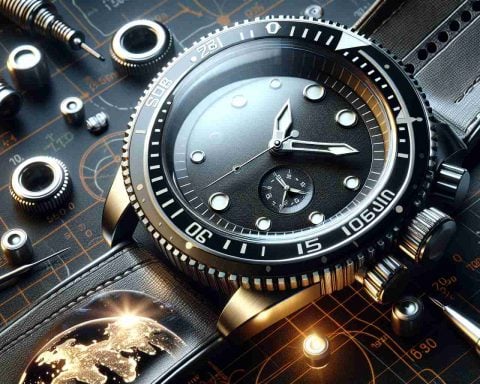A recent development announced by Hanwha Aerospace, a leading defense technology company in South Korea, has caught attention by suggesting a strong likelihood that Poland’s Homar-K rocket system will incorporate the cutting-edge CTM-290 tactical missiles. The Polish adaptation of the Homar-K is fundamentally based on the K239 Chunmoo rocket artillery system from South Korea, similar to the U.S. M142 HIMARS. The incorporation of the CTM-290 could provide Poland with a noteworthy alternative to the U.S. ATACMS, enhancing its long-range attack capabilities.
The CTM-290 missile, crafted by Hanwha Aerospace, is a sophisticated missile system designed for precision strikes over long distances. This missile is reputed for its range, which rivals or even surpasses the 300-kilometer reach of the American ATACMS. Its advanced guidance systems make it exceedingly accurate against both stationary and mobile targets, even under challenging conditions, due to its sophisticated inertial guidance complemented by satellite navigation.
Poland’s endeavor to upgrade its military assets aligns with broader modernization efforts. The acquisition contract for 218 K239 Chunmoo systems, signed on October 19, 2022, entails adapting them to Polish standards, thus enhancing Poland’s versatility in deploying various types of munitions. This agreement also encompasses technology transfers, supporting Poland’s aim to fortify its domestic defense industry.
This strategic move represents a significant pivot for Poland, a crucial NATO ally traditionally reliant on American military technology. By incorporating CTM-290 missile pods into the Homar-K, Poland is diversifying its sources, building stronger ties with South Korea, and setting a precedent that may inspire other European nations to reassess their own defense strategies in view of global uncertainties.
The Impact of Advanced Military Technology on Global Defense and Security
In recent years, the rapid advancement of military technology has significantly influenced the global defense landscape. Nations around the world are increasingly focused on modernizing their military assets to maintain strategic superiority and bolster national security. One such development that exemplifies this trend is Poland’s decision to integrate Hanwha Aerospace’s CTM-290 tactical missiles into the Homar-K rocket system. This move is poised to have a lasting impact on Poland and the broader international community.
Poland’s Strategic Diversification in Defense Procurement
Poland’s integration of the CTM-290 missiles marks a strategic shift in its military procurement policies. Historically, Poland has predominantly relied on American military technology, given its status as a key NATO ally. However, by partnering with South Korea and incorporating the CTM-290, Poland is diversifying its defense sources. This diversification not only strengthens Poland’s military capabilities but also fortifies its geopolitical ties with South Korea, a burgeoning technological powerhouse.
This pivot could serve as a model for other European countries, encouraging them to explore non-traditional partnerships and vendors in response to evolving security challenges. The move highlights the importance of robust defense strategies, considering the unpredictability of global threats.
Enhancing National Security and Deterrence Capabilities
The CTM-290 missile’s integration is set to significantly enhance Poland’s long-range strike capability. With a potential range exceeding 300 kilometers, the missile can engage a variety of targets with precision, thanks to its sophisticated inertial and satellite guidance systems. This capability provides Poland with a strategic deterrent, reinforcing its national security by ensuring credible defense options against potential adversaries.
Moreover, the acquisition is part of Poland’s broader military modernization efforts, which aim to strengthen its defense posture and resilience. By adopting cutting-edge technologies, Poland positions itself as a formidable player on the European defense stage, contributing more robustly to NATO’s collective security goals.
Tech Transfer and the Empowerment of Poland’s Defense Industry
An often-overlooked aspect of Poland’s acquisition of the Chunmoo systems and CTM-290 missiles is the agreement’s provision for technology transfers. This agreement empowers Poland to build a more self-reliant and competitive domestic defense industry. By gaining access to advanced missile technology and manufacturing processes, Polish defense firms can innovate and develop indigenous solutions tailored to their security needs. This fosters economic growth, creates high-tech jobs, and enhances Poland’s role in the international defense market.
Controversies and Geopolitical Implications
Despite the strategic advantages, Poland’s decision has not been without controversy. Critics argue that diversifying defense suppliers could complicate logistics and maintenance, given the variety of systems and technologies deployed. Additionally, some question the long-term reliability of new partnerships compared to established alliances with nations like the United States.
Moreover, the expansion of long-range strike capabilities raises concerns about escalating regional arms races. In response to Poland’s enhanced missile capabilities, neighboring countries might feel pressured to upgrade their own arsenals, potentially heightening tensions in Central Europe.
As Poland continues its path toward military modernization, the world watches closely to see how these decisions will shape not only its future but also the broader dynamics of global defense and security. For more insights into the developments in defense technology, visit Hanwha Aerospace.

















